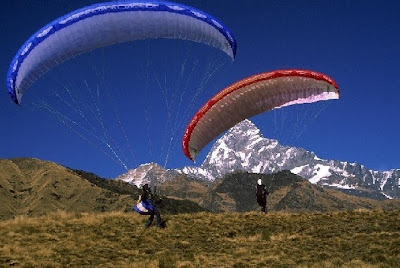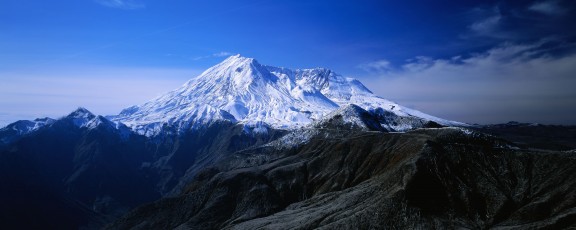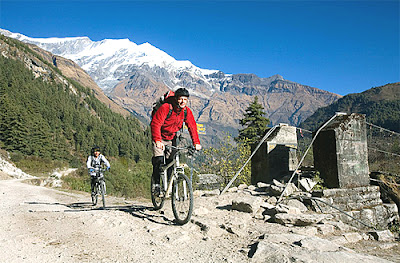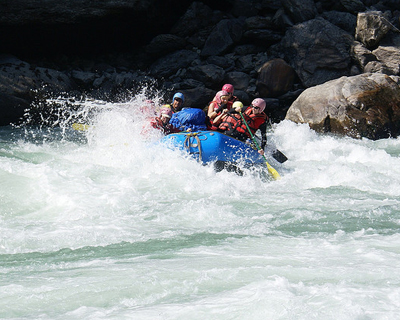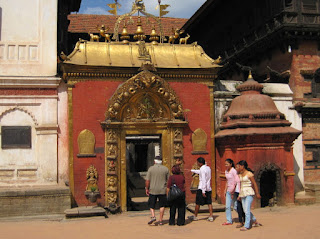Paragliding is a comparatively new journey sport in Nepal, and small data is on the market in tourist guidebooks. "Paragliding" during this Himalayan country will be a really wonderful and fulfilling expertise for the adventure-seekers. you'll be able to expertise unparalleled scenic grandeur as you share airspace with Himalayan griffin vultures, eagles, kites, whereas floating over villages, temples, lake, monasteries and jungles, with an amazing read of the majestic Himalayas.
The last 3 years have seen the activity flourish in Pokhara, and it now could be an internationally recognized destination for free-flight enthusiasts.
Best time to Fly
Gliding is a weather dependent sport and the flying season in Nepal commences from November through February, the most effective months being November and December. By virtue of its monsoonal climate and latitude, the tree line in Nepal is at an out of this world three,900 m on top of ocean level. With conditions milder than summer alpine, these are glorious and constant atmospherics.
The topography and climate of Nepal additionally build it a perfect destination for all levels of pilots- subtropical conditions give many thermals and combined with the long valleys common in Nepal, they turn out good 'cloud streets' ideal for paragliders, inviting them to fly along this "sky highway". The native microclimate, controlled by the various lakes within the valley, is unique, that makes it even higher for the glider.
The 98/99 season saw eighty eight out of ninety days flyable, whereas the 99/00 season went one higher, after we were within the air eighty nine days out of ninety. it'd be arduous to seek out anywhere else with such friendly and constant conditions.
The best months for flying are November, December and January. Cloud base varies between 2000m and 2700m. come back February the extraordinarily short and hardly noticeable winter is over and therefore the ground is incredibly dry, the air hazy. Gone are the delicate conditions of the previous three months. By March and April there's a mountain wind, returning off the massive peaks and a few days causes sturdy valley winds. Indeed you'll be able to windsurf in April on Phewa Tal, the largest lake within the Pokhara valley. The serious air is simply expecting the monsoon and therefore the intermittent storms in April and should are solely a forerunner for the spectacular break within the weather come back early June.
The last 3 years have seen the activity flourish in Pokhara, and it now could be an internationally recognized destination for free-flight enthusiasts.
Best time to Fly
Gliding is a weather dependent sport and the flying season in Nepal commences from November through February, the most effective months being November and December. By virtue of its monsoonal climate and latitude, the tree line in Nepal is at an out of this world three,900 m on top of ocean level. With conditions milder than summer alpine, these are glorious and constant atmospherics.
The topography and climate of Nepal additionally build it a perfect destination for all levels of pilots- subtropical conditions give many thermals and combined with the long valleys common in Nepal, they turn out good 'cloud streets' ideal for paragliders, inviting them to fly along this "sky highway". The native microclimate, controlled by the various lakes within the valley, is unique, that makes it even higher for the glider.
The 98/99 season saw eighty eight out of ninety days flyable, whereas the 99/00 season went one higher, after we were within the air eighty nine days out of ninety. it'd be arduous to seek out anywhere else with such friendly and constant conditions.
The best months for flying are November, December and January. Cloud base varies between 2000m and 2700m. come back February the extraordinarily short and hardly noticeable winter is over and therefore the ground is incredibly dry, the air hazy. Gone are the delicate conditions of the previous three months. By March and April there's a mountain wind, returning off the massive peaks and a few days causes sturdy valley winds. Indeed you'll be able to windsurf in April on Phewa Tal, the largest lake within the Pokhara valley. The serious air is simply expecting the monsoon and therefore the intermittent storms in April and should are solely a forerunner for the spectacular break within the weather come back early June.
